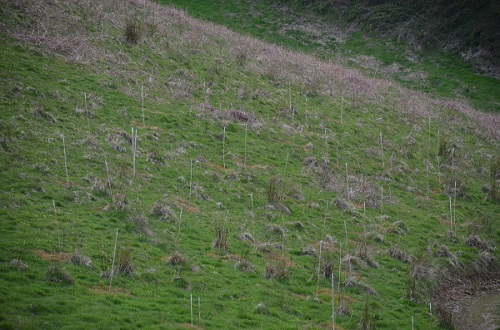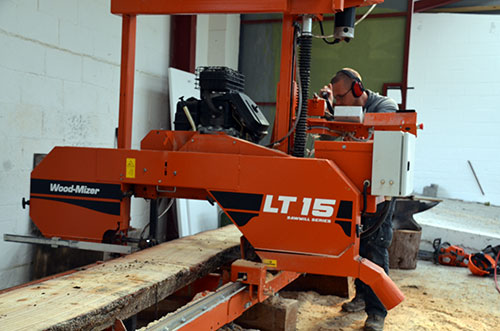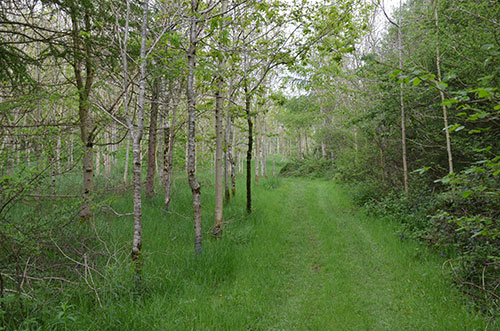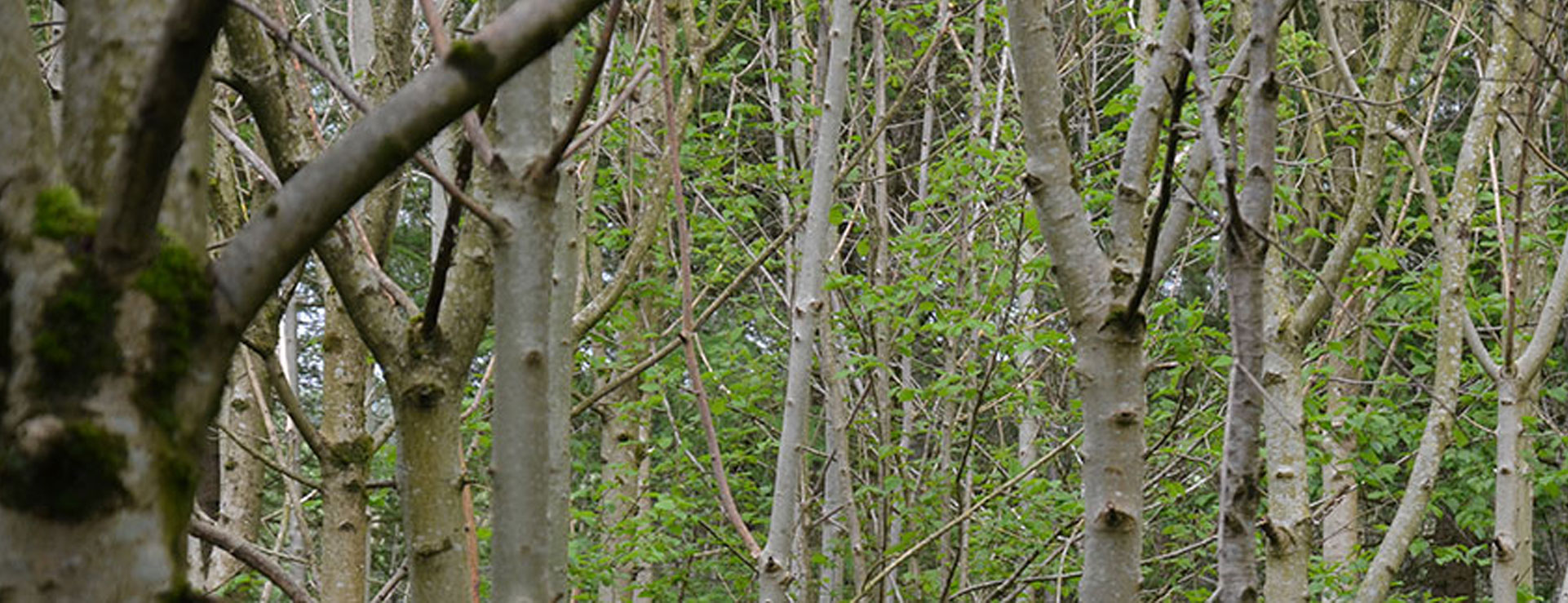Woodlands

As the farm has expanded from 7 acres in 1982 to its current 292 acres we have been creating woodlands. Note the expression ‘creating woodlands’ which is a step on from merely ‘planting trees’. Currently about 30 % of the farm is in some kind of woodland, and our target is to reach 50%. We think we can reach this by 2017.
To do this raises a number of questions:
- How much will this reduce the food productivity of the farm?
- How much will this reduce the income from food productivity?
- How much will this reduce the income from Single Farm Payments?
- Which areas of the farm are least productive and could be ear-marked for woodland?
- Are grants available for tree planting?
- If so, what are their compliance conditions?
- Would home-grown seedlings be eligible for grants?
- Are there payments available for maintaining land in woodland and out of agricultural production, such as the Tir Gofal Scheme?
- Would it actually be cheaper to just buy areas of existing woodland rather than plant up our own farmland?
- What type of woodlands should we plant?
- How can we create the shrub layers, woodland herbs, bryophytes and fungi?
- How can we prevent farm animals from entering the woods?
- Should we deliberately allow some farm animals into the woods on a managed basis?
- Can the woods provide forms of recreational amenity, such as game animals?
- Should we use some kinds of tree guards, and are they biodegradable?
- When should we remove tree guards that are not biodegradable?
- Should we spray around the young trees, if so, with what spray?
- Can we physically get onto the slopes with machinery or back packs, given health and safety risk assessments?
- How do we manage tree diseases in the woodlands, such as ash dieback, and Phytopthera in larch?
- Should we extract timber for commercial uses, or is it better ecologically and economically to leave it to rot?
- Can we find uses for home-grown timber that is not of sufficient quality or quantity for commercial sale?
- Where should we season timber, and should we season it in the round, or planked?
- Should we stick to indigenous species found in this area?
- Should the stock plants be of local genotypes to maintain continuity and adaptation to local conditions?
- Should we plant indigenous species but genotypes that produce ‘better’ trees, such as ones that grow faster and straighter for better timber production?
- Should we collect our own seeds and grow them on, or should we buy in whips?
- Should we plant only bare-rooted trees, which limits us to winter planting?
- Where do we keep those pots, to avoid mice and rabbits, allow for watering and weeding, and avoid over-heating?
- How tall do the seedlings need to be to cope with surrounding vegetation?
- How to mark the positions of trees when planting into bracken?
- Should we go for ‘commercial’ forestry, single species, same age softwoods as a farm crop?
- Should we be aiming to get the woodland certified?
- Should we go for mixed species, and should we plant them in relation to the aspect and soil type of the land?
- Should we totally randomize the planting, or should we group species to some extent?
- What do we know about the pH, fertility, soil type and underlying geology?
- Should we go for maximum diversity of species (so-called ‘catalogue woods’), or should we avoid some species, such a cherry, which will grow here but are not found in native local woodlands?
- Should we consider how each species propagates itself, and plant accordingly, for example by placing wind dispersing seeders, such as ash, up wind or uphill?
- Should we plant the whole area in one go, or stagger the planting over several years?
- Should we include warm clumps of evergreen trees for nesting pigeons and for roosting owls, and can we achieve this with holly, or go for a few spruce?
- Should we plant trees in neat rows that are easier to manage, or should we plant randomly?
- Should we use a nursery crop such as larch, and if so how are we going to selectively log it out without damaging the remaining trees?
- Should we avoid clear-felling at all costs?
- In removing a commercial spruce or larch plantation, how do you remove the residual seed bed?
- Should we accept that the term ‘indigenous’ is of limited relevance when many introduced species, such as sycamore, are now naturalised and will never be eradicated?
- Where we have small remnants of indigenous woodland vegetation, such as patches of heather or ling, how can we help them to recover?
- Should we be trying to emulate the past, or design woods for the future?
- Can we reconcile an ecologically balanced wood with the needs of timber production, including felling and extraction regimes?
- Can we create woodlands with a high proportion of dead trees left decaying in situ?
- Can we create woodlands that help retain water, reducing run-off and flood risk?
- Can we strategically place woodlands to shelter farm fields and animals from wind chill?
- Can we create woodlands that are warm underneath, even in winter?
- Can we create woodlands providing insect and plant food resources for wildlife?
- What qualifications and insurance do staff need to drive tractors, use quad bikes, tow trailers, fell trees, use chainsaws, mow tracks and rides, erect fences and use the sawmill?
- Will our saws and equipment be able to saw up hard wood, such as seasoned oak trees, in the round?
- Will home-grown uncertified timber be acceptable to planners and building regs for use in residential buildings?
- Could home-grown timber be suitable for Coffin Clubs and green burials?
- Is charcoal really worthwhile?
- Are hurdles and green woodwork really worthwile?
- Should we pile up branches and thinnings and burn them, or leave them in heaps as habitat, or leave them scattered as they fell?
- Will the woodland contribute to sequestrating carbon and should we try to get some kind of carbon offset income?
- If we fell timber for fire wood, is this negating any carbon benefits?
- Given that we are supposed to have a felling licence for any trees over 10 cm diameter, are we really going to comply with all this paperwork?
- Our hedge trimming costs are about £4,500 per year; is there any way to recover these costs?
- For hedges on slopes too steep for tractors, our options are to hand lay them, or to let them go to become straggly trees. What to do?
- Given that our average field size is about 5 acres, we have a very high and uneconomic hedge to field area ratio, especially in relation to competitors in Europe. Is there any way we can rationalise this to make the farm more competitive and productive?
- For species such as hazel, should we coppice them to open up the woods and produce coppice that may or may not have some practical use, or should we let them grow up to produce hazel nuts for dormouse habitat?
- What proportion of the woodland area should be left without trees to create open areas?
- Should we prune any tree trunks to improve them for timber production?
- Should we allow any poisonous species in the woods, such as yew?
- Can we depress grey squirrel populations enough to make woodland planting viable? How to do that humanely and economically?
- How do we prevent voles eating out the roots of young trees, such as beech?
- Is it economic to put tree guards on all trees, or just on certain tree species in rabbit-prone areas?
- If we had deer or pigs, what are the economics of protecting smaller areas of new woodland?
- Should our approach be to have hard-edge designated climax woodland areas and equally hard-edged agricultural fields, or is there any way we can make intermediate, softer, scrubbier, more broken habitat with lots of ‘edge effect’? How can that be managed to maintain it, without it going to dense woodland?
- If there are areas of meadow within the woodland area, how do we maintain them as species-rich meadow without them progressing to woodland?
- Having planted up an area for woodland, should we just shut the gate and leave it for a couple of hundred years, or should we manage it productively?
- Should we allow predators in the woods, such as humans, cats and dogs?
- How do we manage tracks in the woods? What traffic such as quad bikes, tractors and horses can they withstand and at what time of year, and what trimming regimes should we follow for the tracks and the herb species that live there?
These are some of the questions we have had to address over the years and we will try in this section of the website to show you how we have tackled them. Be patient; this is a very wide-ranging subject and is core to what some people describe as ‘re-wilding’. There is a lot of theoretical debate on ‘re-wilding’ circulating at the moment, and it is important to ground truth debate with real life experience.


